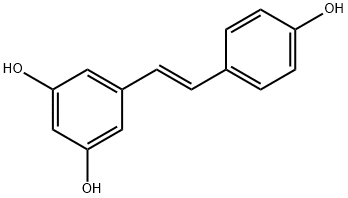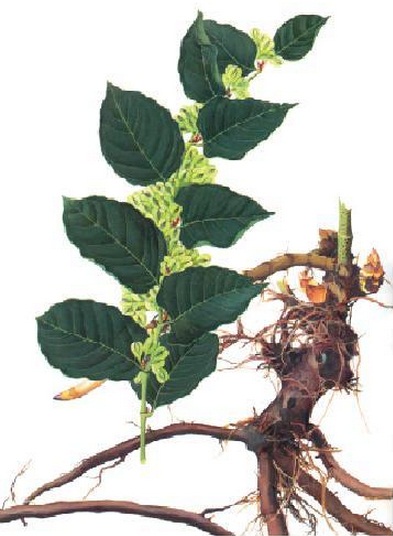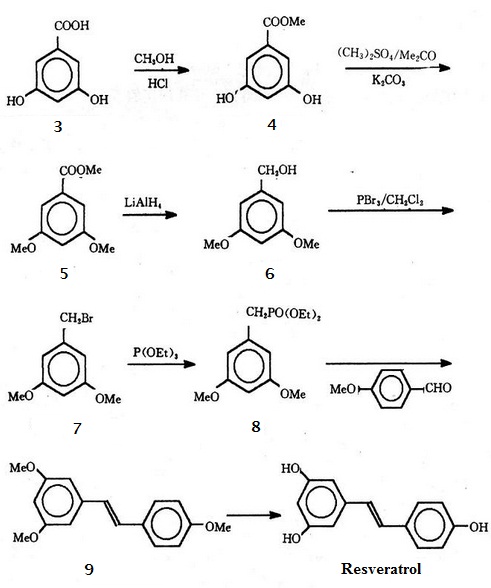Chemical Properties
Off-White to Tan Powder
Definition
ChEBI: A resveratrol in which the double bond has E configuration.
Description
Resveratrol, a non-flavonoid polyphenolic compound, is widely found in the skin of red grapes, nuts, berries, Polygonum cuspidatum root, etc. It is reportedly known to exhibit pharmacological properties including anti-cancer, anti-inflammatory, antioxidant, neuroprotectant, anti-atherogenic property and reduces the synthesis of pro-atherosclerotic substances.
General Description
Resveratrol, a non-flavonoid polyphenolic compound, is widely found in the skin of red grapes, nuts, berries, Polygonum cuspidatum root, etc. It is reportedly known to exhibit pharmacological properties including anti-cancer, anti-inflammatory, antioxidant, neuroprotectant, anti-atherogenic property and reduces the synthesis of pro-atherosclerotic substances.
Biological Activity
A phytoestrogen with antitumor, antioxidant, antiplatelet, anti-inflammatory and antifungal effects. Inhibits cytochrome P450 1A1 (IC 50 = 23 μ M) and displays mixed agonist/antagonist actions at ER α and ER β estrogen receptors. Converted into the anticancer agent piceatannol (4-[(1E)-2-(3,5-Dihydroxyphenyl)ethenyl]-1,2-benzenediol ) by cytochrome P450 1B1
Biochem/physiol Actions
ED50 = 15 μM against COX-1
Mechanism of action
Resveratrol can be found in the skins and seeds of grapes and in peanuts. It has demonstrated potent antioxidant, anti-inflammatory, and anti-proliferative activities. Topical application of resveratrol in mice demonstrated photoprotection by significantly decreasing UVB-mediated generation of hydrogen peroxide and infiltration of leukocytes. Its antiproliferative properties are related to the inhibition of cellular events associated with tumor initiation, promotion, and progression, and the triggering of apoptosis in tumor cells.
Anticancer Research
Resveratrol is a stilbinoid, found in the skin of grapes, peanuts, berries, and otherfruits. The cytotoxic effect of resveratrol is mediated via the inhibition of severaltranscription factors; upregulation of caspases, Bax, and p53; and downregulationof survivin, cyclins, and Bcl-2. Increase in Bax/Bcl-2 ratio and upregulation ofcaspases lead to apoptosis. The beneficial effects of resveratrol against cancer havebeen shown in all the stages of cancer including carcinogenesis, initiation,promotion, and progression. It could inhibit Wnt target gene expression in normalcolonic mucosa of the colorectal cancer patients. It increases the caspase-3 inmalignant hepatic tissue and induces anticarcinogenic effects in humangastrointestinal tract (Hosseini and Ghorbani 2015). It has the ability to inhibit thedevelopment of DMBA-induced phenoblastic lesions in the mammary gland organculture (MMOC) model of carcinogenesis and in two-stage full-term mouse model(Balunas and Kinghorn 2005). It prevents carcinogenesis by upregulating Bax andp53 proteins and downregulating NF-κB, COX-2, AP-1, cyclin-dependent kinases,hypoxia-induced factor 1α (HIF-1α), cyclins, MMPs, cytokines, and Bcl-2 proteins(Singh et al. 2016b). It plays a pivotal role in preventing the initiation, promotion,and progression of cancer by inducing phase II drug metabolizing enzymes, bymediating anti-inflammatory effects and inhibiting COX and hydroperoxidasefunctions, and by inducing cell differentiation, respectively, in human promyelocyticleukemic cells (Jang et al. 1997; Aggarwal et al. 2004).
Resveratrol, a noteworthy polyphenol occurring in different plants such as grapesand peanuts, has appeared to be required in cell reinforcement, anti-proliferative,anti-inflammatory, and chemopreventive activities. Various potential medicaladvantages, including decreased danger of malignancy and coronary illness, arebelieved to be related to the utilization of resveratrol. It can successfully and proficientlyrepress endothelial cell multiplication and migration, with little cell toxicityin the HUVEC and ARPE19 lines (Cao et al. 2010). Also, there have been perceptionsof inhibitory consequences for smooth muscle cell migration (Venkatesanet al. 2009) and tumor necrosis factor-alpha-incited monocyte adhesion and migration(Kim et al. 2007). As of late, it was recognized that the restraint of PDGF-BB-actuatedcell migration by resveratrol and the particular inhibitors PDGF-R, PI3K,MEK, or p38 in wound healing test agreed with diminished enactment of PDGFBB-incited PDGFR-β, PI3K/Akt, ERK, and p38 phosphory-lation in Western blotinvestigation, recommending that resveratrol hinders cell migration through theinhibition of PI3K/Akt, PDGFR-β, and MAPK cascade (Chan et al. 2013).
References
1) Fremont (2000), Biological effects of resveratrol ; Life Sci., 66 663
2) Howitz et al. (2003), Small molecule activators of sirtuins extend Saccharomyces cerevisiae lifespan; Nature, 425 191
3) Park et al. (2012), Resveratrol ameliorates aging-related metabolic phenotypes by inhibiting cAMP phosphodiesterases; Cell, 148 421


